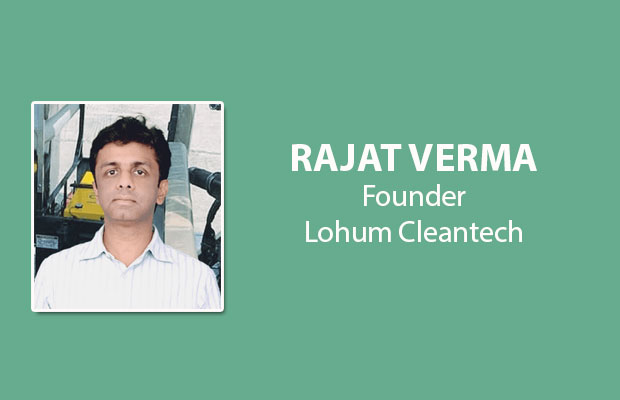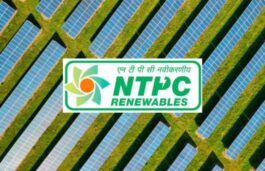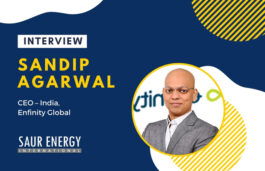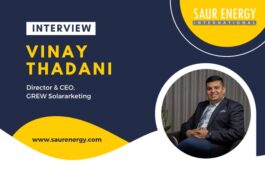
Powering next-gen li-ion battery mobility and energy solutions, making second lives for batteries a reality through reuse technology, and lithium ion battery recycling, Lohum is proving to be a gamechanger in the battery recycling and repurposing space. Rajat Verma, CEO & Founder, Lohum, offers insights into the battery recycling industry, providing an overview into the industry while shedding light on the work being undertaken by Lohum.
Experts consider 2022 as a break even point for the Indian EV industry. How do you go about 2023?

Rajat Verma, CEO & Founder, Lohum
2022 was indeed a break even point for the Indian EV industry for many reasons. The 2020’s may be the last stable decade in terms of climate change and thus we have limited time to prevent the catastrophe. We have to ensure that the entire ecosystem is rooted in India to enable a sustainable industry.
Given the urgency of the situation, we are seeing rapid evolution in the Indian EV industry.
Last year, we saw a nationwide increase in EV adoption, with October 2022 recording a 185% surge in retail sales of electric vehicles in India, according to FADA. In the first half of 2022 alone, we witnessed 268% growth in EV four-wheeler sales.
The 2023 Budget was very encouraging, especially with regard to the import duty waiver on capital goods for the production of Lithium-ion cells. It positively impacts the industry as well as Lohum. The other development is the viability gap funding for the production of ESS batteries, which will increase industry competitiveness and cement a base for Lithium-ion batteries as the most viable energy storage technology.
This reflects that we, as a country, are very aggressive about moving to renewables, which are inextricably linked to EVs, aiming for the national target of 500 GW in renewables capacity by 2030. Previously, the government had created various schemes for cell production, EV demand penetration, and more, but the element that is still missing in the country is the middle part of the supply chain, i.e. refiners.
Who would refine the ores and convert them into cathode materials? There is no scheme for that and we’re hoping the government addresses that soon. The US, EU, and China all have very aggressive schemes for battery material producers to the order of tens of billions of dollars.
In 2023, expect to see rapid growth in the Indian EV market. This is also because the Government has been forthcoming in subsidizing production of EVs via the FAME schemes and regulating battery waste via the BWMR.
To foster a booming EV economy, we have the right talent, market, and policies. However, India needs to have an integrated EV battery recycling and repurposing business model based on circular economy tenets. Industry players need to step up significant investments in recycling and repurposing R&D, unlike traditional recyclers that have not invested in R&D. Lohum hosts the most extensive R&D in Li-ion battery recycling and repurposing and has over 40 R&D engineers working on these challenges.
How do you differentiate your battery products in the sector in terms of technology and economy?
Our 100% off grid solutions include EV charging stations and Energy Storage Systems made from repurposed second life Mercedes Benz EV batteries. This is made possible with our remaining useful life-testing capabilities that enables us to discover and maximize battery residual value. This results in significantly lower battery prices and 90% CO2e savings per KWh vs mining.
Our patented Metelec™ Lithium-ion battery recycling and extraction technology yields top-quality raw materials and produces zero waste. All while incurring significantly lower financial and environmental expenses, saving 50% of CO2e per KWh vs mining. The technology delivers a 95% yield, which is highly competitive, even compared to global competitors. Our LOPI™ index reflects the live movement of material prices based on global demand and supply and insulates OEMs and their customers against price fluctuation.
Combined with our ability to generate BWMR-compliance certificates, we are an ideal battery recycling, repurposing, and reverse logistics partner for OEMs looking to transparently meet Extended Producer Responsibility. Lohum’s 360° coverage of every aspect of Lithium-ion battery lifecycle management with unprecedented GHGe savings has made us a market leader in the space.
Lohum has built a battery recycling market share of approximately 70-80% in India, and is slated to prevent over 4 million tons of CO2e by 2026.
The lithium battery recycling (circular economy) is evolving owing to EV adoption in the country. What prospects do you see in this segment in the coming days?
Currently, the battery recycling industry is beginning to take off, and is driven largely by consumer electronics. With the rapid growth of the EV sector, battery materials from EVs have only just begun entering the domestic ecosystem.
There are many differentiators between how the conventional Indian recycling industry at large used to work and the presently emerging battery recycling industry. The key is the volatile and hazardous nature of Li-ion battery raw materials which necessitates technological and operational expertise in handling and processing those materials.
This was not true for conventionally recycled materials like plastics, glass, and even e-waste. As reminded by recent news, EV batteries can catch fire if not properly handled. Given these conditions, the market is going to be a lot more cautious going forward.
Lohum applauds the Indian Government’s initiative in this situation by acting before this became a bigger problem. The government has already laid out target-based Battery Waste Management Rules (BWMR), which is a very healthy development as the BWMR are the most progressive anywhere in the world. We recognize that the government may not have enough resources to enforce these rules fully. However, because there are global OEMs involved with their reputations at stake, OEMs collectively with recyclers like us will create an industry that is far more organized than what we’ve seen conventionally in recycling.
Given the rising costs of mined battery raw materials, finite natural reserves, and enormous carbon footprint of mining, the widespread adoption of battery recycling and repurposing stands as a key trend to sustain the global transition to battery power.
Combined with a nationwide push for increased localization of materials and manufacturing, we have good reason to view the market very favorably, as it presents a multi-billion dollar opportunity.
As a result, we can predict with certainty that the battery recycling industry is set to upscale significantly within the decade, and drastically increase in circularity. Its growth will directly boost EV manufacturing and Li-ion cell production by virtue of lower costs and increased availability of low-carbon materials.
The battery industry is highly R&D dependent. What’s your budget for R&D at present and how do you plan it for the coming years?
R&D in sustainable materials is at the core of our company, and we have designated 5% of our annual revenue to R&D. We host the most extensive R&D in LIB materials extraction & prediction of RUL and are over 40 R&D engineers strong.
Last year, Lohum was recognized as ‘The Most Innovative Company of the year 2022’, awarded by the Confederation of Indian Industry (CII), a testament to the efficacy of our transformative R&D team.
How is the stationary battery market coming your way? Do you expect a significant jump in business as the energy sector is developing in leaps and bounds, especially the renewable sector?
Yes indeed, we expect a significant jump in the demand for our stationary Energy Storage Systems given the rising proliferation of renewables in India. Lohum is uplifting the battery repurposing or second life ecosystem in India, and through that we’re driving down the cost of batteries for stationary energy storage applications.
Lohum’s EV charging station technology is highly customizable, available for two-wheelers, three-wheelers, L5 EVs, and four-wheelers, in both fast charge and slow charge variants. The stations can charge multiple vehicles at once, and can become 100% off-grid by connecting to solar panels, making them ideal for powering e-mobility in rural India.
Our stationary Energy Storage Solutions (ESS) technology is capable of a highly dynamic range of applications that can power homes, offices, and industry. The ESS can be used in grid stabilization for solar and wind farms as well as office rooms or off-grid homes, and is fully customizable in terms of charge/discharge and voltage ratings.
Overall, lower costs and versatility will boost consumer accessibility to sustainable ESS batteries, speeding up the adoption of both renewables and battery power across India.
Any plans to delve into other technologies besides lithium like solid-state or sodium-based?
We plan to develop sustainable low carbon extraction technologies in the areas of Platinum, Palladium, Rhodium, Neodymium and other precious rare earth and critical metals to enable Lohum and India to be at the forefront of the energy storage space.
Take us through your 2-GWh battery recycling facility in Greater Noida.
Our 2 GWh “Reclaim” facility at Greater Noida is the largest of its kind in India. The facility is proof of the viability, efficiency, and scalability of our Metelec™ process, and has enabled us to secure partnerships with key industry players across the globe.
The facility is our key ‘hub’ in our hub-and-spoke growth model, where we plan to establish spokes for battery scrap intake across the world, feeding into our central hub in India.



























